|
49. Celastrina argiolus (Linnaeus, 1758) / Holly blue / Lycaenidae – Polyommatinae
NL: zilverblauwtje, boomblauwtje, vuilboomblauwtje / D: Faulbaumbläuling / F: azuré des parcs, l’azuré des nerpruns, l’argus à bande noire
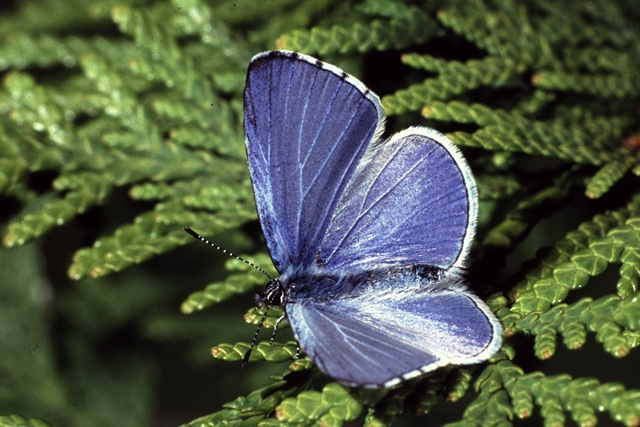 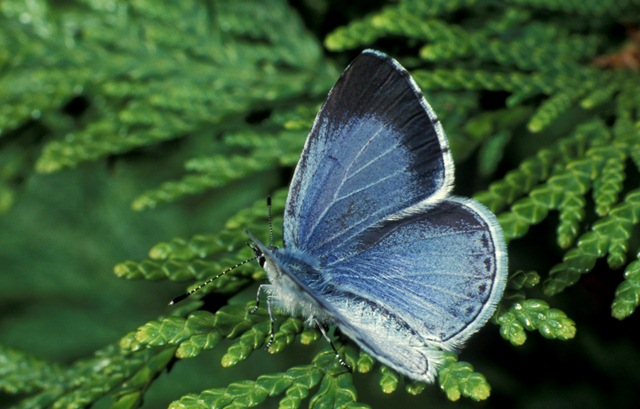 
Photographs: Frits Bink ©.
Small, wing length 14 (13-16) mm. The species occurs everywhere in the Benelux, both in parks and gardens in countryside and urban areas. It is also known from dunes, heathland (where it is sometimes abundant), woods and scrubland. The first impression is that this species is both ubiquitous and polyphagous, having many host-plants; however, on close inspection of its ecology, it can be seen that it is very precise in selection of its food-plant at different times and locations.
Butterfly is on the wing from mid-April until mid-September. The species is known from maritime and severe continental climates, amplitude 5 to 20, required heat sum 500°d and maximum tolerated 2300°d, corresponding climate windows 21 and 41 weeks.
Although there are many plant species recorded as host-plants, the ovipositing female always selects the most nutritious plant at that particular time and place. The larva eats both buds and fruit and also, in its final instar, leaves of a small number of plant species.
The female may sometimes make an error by ovipositing on an unusual species, which drops its flowers in a temperate climate, thus all the young larvae perish; this was observed on 5 August 1986 at Broekhuizen on Wisteria sinensis.
On heathland Celastrina argiolus may fly at the same time and place as Plebejus argus, from which distinction at a distance may be difficult; however, differences in behaviour are obvious: the former is a patrolling nomad, the latter a stay-at-home that perches.
Ecological characteristics
Behaviour over time
Overwintering: pupa in litter layer or on a withered leaf.
Reproduction: oviposition starts after 3-5 days when the body contains 56 (44-67) eggs, estimated potential reproduction 2.3 times as much.
Larval feeding periods: two to three weeks in period from May until September.
Generations: in cool climate one, in temperate climate two and in a warm one up to three.
Spreading of risk: extended diapause.
Life cycle: egg 4 (3-5) days; larva 18 (15-27) days; pupa 14 (11-20) days and 31-47 weeks in the case of overwintering.
Life span of adult: rather long, 3 weeks.
  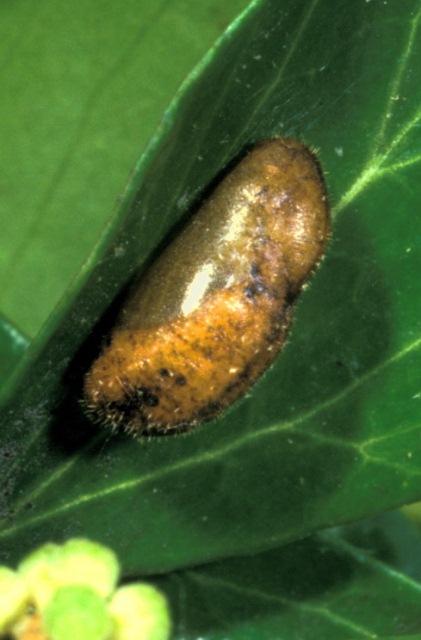
Photographs: Frits Bink ©.
Behaviour in space
From stay-at-home to migrant: nomad, spatial requirement modest. Long distance migration may occur.
Finding a mate: male patrols.
Orientation in the landscape: gradient open field to wood, shrubby heathland, parks and gardens.
Oviposition: flower buds preferred but shoots may be accepted.
Defence
Threats from other organisms: this species has its specific parasite, the ichneumonid wasp Listrodomus nycthemerus.
Myrmecophily: full array of ant-attracting and appeasing organs present, larvae are frequently tended by ants, in experiment by Lasius niger.
Threats from the environment: the butterfly prefers sheltered and humid places, so it may be vulnerable to drought.
Feeding habits
Adult: nectar of small flowers, such as ling, snowberry, alder buckthorn, bladder senna, purple loosestrife.
Larva: bores into flower buds or fruits, eats meristem and sometimes, in the last instar, also leaves.
Larval foodplants
Plant species: Araliaceae, Hedera helix; Aquifoliaceae, Ilex aquifolium.
Ericaceae, Calluna vulgaris, Vaccinium uliginosum.
Fabaceae, Genista pilosa; Lytraceae, Lytrum salicaria.
Rhamnaceae, Rhamnus frangula.
Journal
Rearing experiments:
1. Based on specimen from Amerongen, Netherlands:
17 May 1981: eggs collected from an alder buckthorn (Rhamnus frangula).
19 May: eggs hatched, larvae ate flowers.
24 May: larvae in moult.
1 June: larvae in last instar, ate both flowers and leaves. Myrmecophilous organs at work, lateral organs were used sometimes.
3 June: larvae changed colour from green to reddish.
19 June: first adult appeared.
2. Based on specimen from Tubbergen, Paarden slenken, Netherlands:
24 July 1985: four females captured from the heath.
26 July: one female laid 36 eggs on Calluna.
2 August: eggs hatched.
26 August: larvae about four mm in length.
31 August: larva in L5 dead.
6 September: all larvae dead.
3. Based on specimen from Bennekom, Netherlands:
10 July 1989: freshly laid eggs collected from alder buckthorn (Rhamnus frangula).
13 July: eggs hatched.
16 July: moult L1-2.
19 July: moult L2-3, 3 mm in length.
22 July: moult L3-4, ecdysed skin was consumed.
26 July: previously larvae had eaten fruits, both young and ripe but started to eat young leaves.
28 July: larvae became rose coloured.
29 July: prepared for pupation.
30 July: pupated.
12 August: adult hatched.
Table 49-1. Results of dissections

Table 49-2. Collection and observation localities
B, Theux 50° 33’ 20”N – 5° 49’ 50”E; 30 April 1983, 17 June 1983.
F, la Grande Brière 47° 23’ 42”N – 2° 17’ 22”W; 24 September 2004.
F, Lorraine, Jaulny 209 m, 48° 57’ 55”N – 5° 52’ 52”E; 29 June 2002, 8 July 2006.
NL, Amerongen, garden 52° 00’ 01”N – 5° 27’ 34”E; 1976-1985.
NL, Bennekom, garden 51° 59’ 30”N – 5° 40’ 34”E; 1988-2014.
NL, Hoge Veluwe 52° 05’N – 5° 51’E; 11 July 1983, 30 July 1984.
NL, Hoge Veluwe 52° 04’ 47”N – 5° 49’ 47”E; 27 July 2000, 31 August 2000.
NL, Hoge Veluwe 52° 03’ 41”N – 5° 50’ 46”E; 31 May 2002.
NL, Tubbergen, Paarden Slenken (Mander Heide) 52° 27’ 19”N – 6° 49’ 38”E; 24 July 1985, 23 July 2008.
Fig. 49-1. Celastrina argiolus, phenogram adapted from Bos et al. 2006: 171.
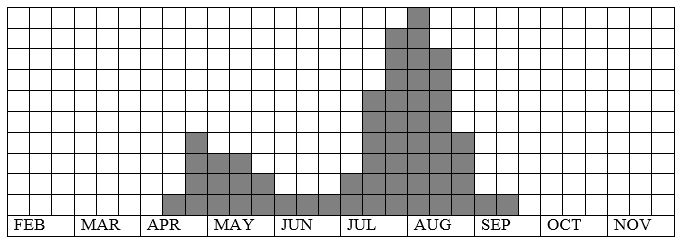
Fig. 49-2. Celastrina argiolus, habitat characteristics.
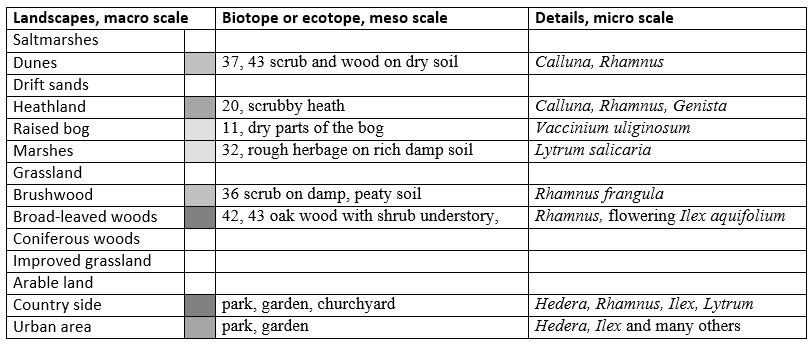
Fig. 49-3. Celastrina argiolus, climate matrix, heat-sums 500 - 2300°d.

|











